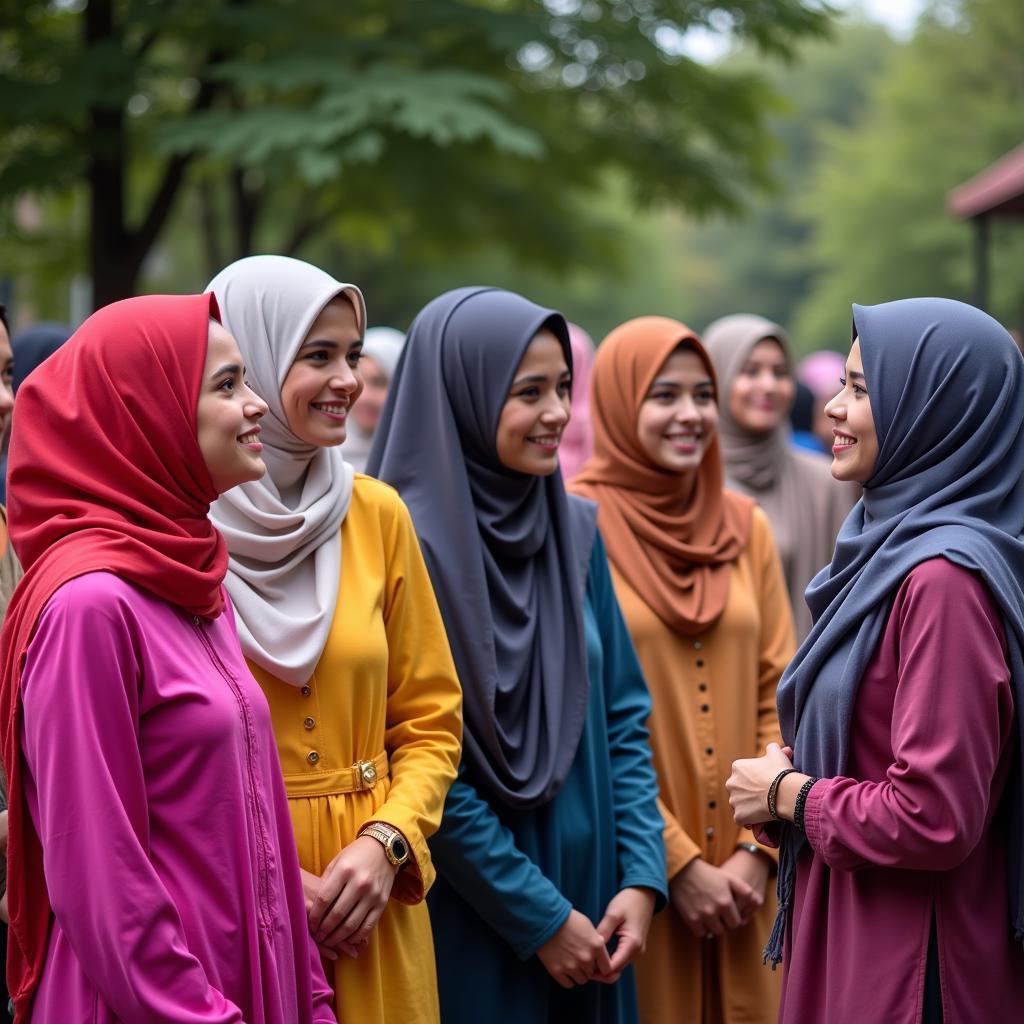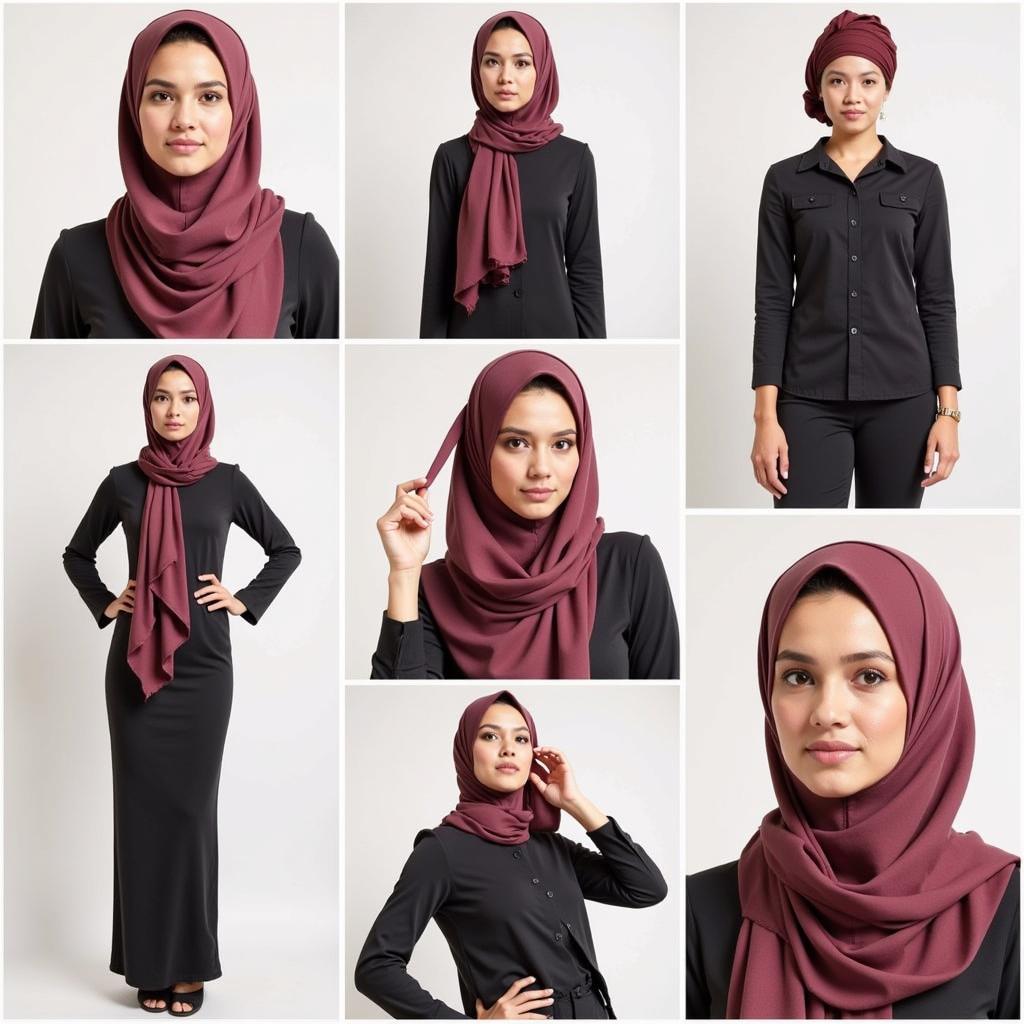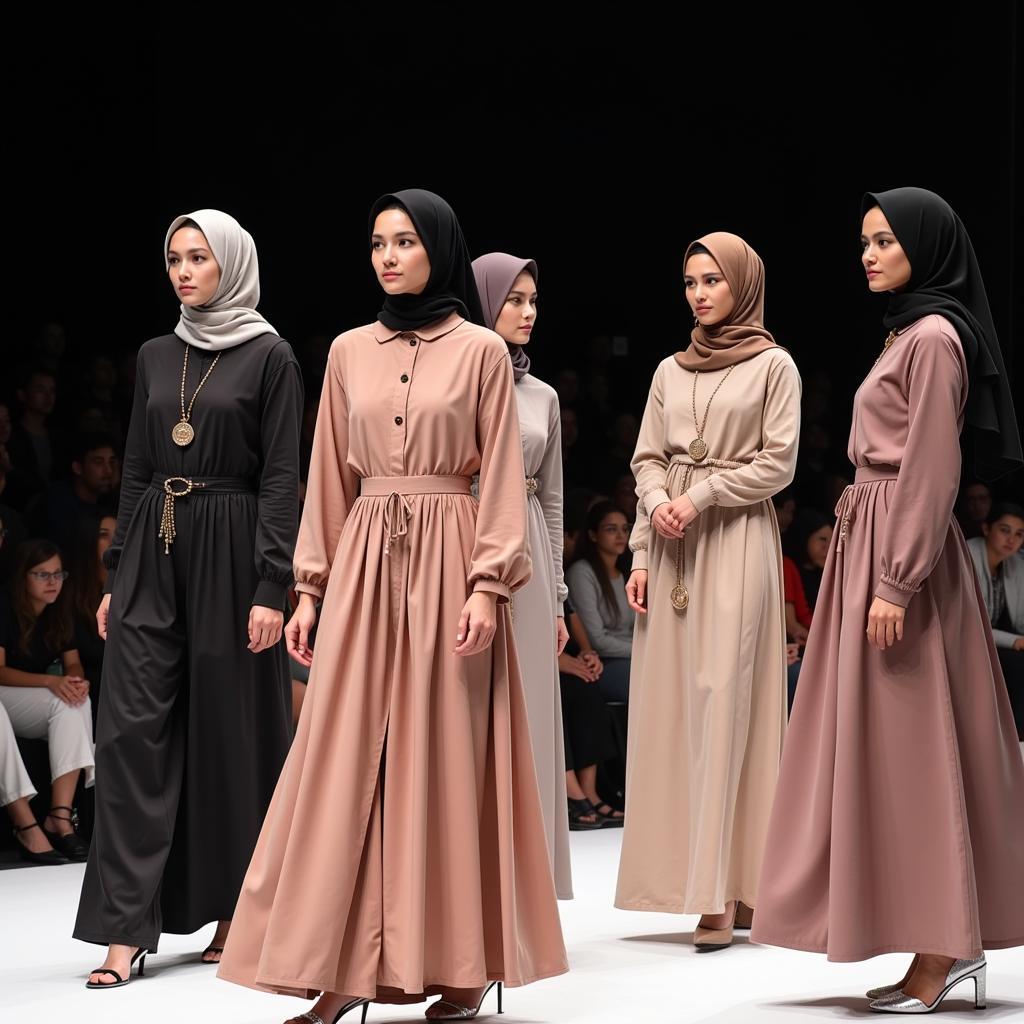Women’s Islamic clothing is deeply rooted in the principles of modesty, faith, and cultural identity. While often referred to as “hijab,” which specifically denotes the headscarf, the concept encompasses a diverse range of garments and styles that vary across regions and personal preferences. This guide delves into the significance, variations, and contemporary interpretations of women’s Islamic clothing.
 Muslim women in traditional attire
Muslim women in traditional attire
Understanding the Essence of Modesty in Islamic Clothing
The fundamental principle guiding women’s Islamic clothing is “hijab,” an Arabic word signifying “barrier” or “curtain.” This concept extends beyond physical covering to encompass modesty in behavior, speech, and appearance. It emphasizes the importance of inner beauty, character, and spiritual growth over external adornment.
For many Muslim women, dressing modestly is a personal act of worship and a visible manifestation of their faith. It fosters a sense of identity, belonging, and connection to their religious community.
 Popular hijab styles
Popular hijab styles
Exploring the Diversity of Women’s Islamic Clothing
Contrary to popular belief, women’s Islamic clothing is not monolithic. A wide array of garments and styles cater to different cultural contexts, personal preferences, and levels of observance. Some of the most common garments include:
- Hijab: The headscarf, often considered the most recognizable symbol of Islamic modesty, is worn in countless styles and colors, reflecting individual taste and regional customs.
- Abaya: A loose-fitting, robe-like outer garment commonly worn in the Arabian Gulf region, often black in color but increasingly available in a variety of fabrics and embellishments.
- Chador: A semi-circular piece of fabric draped over the head and body, predominantly worn in Iran, symbolizing both religious observance and cultural identity.
- Burkini: A modest swimsuit covering the entire body except for the face, hands, and feet, allowing Muslim women to participate in swimming and other water activities while adhering to Islamic principles of modesty.
 Modern Islamic fashion
Modern Islamic fashion
Women’s Islamic Clothing in a Globalized World: Navigating Style and Tradition
In a world increasingly interconnected through globalization and social media, Muslim women are embracing contemporary fashion trends while staying true to their religious beliefs. This has led to a flourishing modest fashion industry, with designers and entrepreneurs catering to the diverse needs and aspirations of Muslim women worldwide.
From modest evening gowns and stylish everyday wear to sportswear and accessories, the options are endless. Online platforms and social media influencers have played a significant role in showcasing the versatility and elegance of women’s Islamic clothing, inspiring creativity and challenging stereotypes.
Conclusion
Women’s Islamic clothing is a powerful expression of faith, identity, and cultural heritage. Far from being restrictive, it empowers women to embrace their individuality, celebrate their spirituality, and navigate the modern world with confidence and grace. As understanding and appreciation for diverse cultures grow, the beauty and significance of women’s Islamic clothing continue to captivate and inspire.
FAQ
1. Is it mandatory for all Muslim women to wear hijab?
The decision to wear hijab is a personal one, influenced by individual beliefs, cultural norms, and family traditions. While considered obligatory by many Islamic scholars, it is ultimately a matter of personal faith and choice.
2. Can non-Muslim women wear Islamic clothing?
Out of respect for the religious significance of Islamic clothing, it is generally advisable for non-Muslim women to refrain from wearing garments specifically designed for religious observance.
3. Where can I find modest fashion inspiration and purchase Islamic clothing?
Numerous online retailers, boutiques, and designers specialize in modest fashion and Islamic clothing, offering a wide range of styles, sizes, and price points. Social media platforms like Instagram and Pinterest are also excellent sources of inspiration.
4. What are some common misconceptions about women’s Islamic clothing?
One common misconception is that Islamic clothing is oppressive or forced upon women. In reality, many Muslim women choose to dress modestly as a personal expression of their faith and identity.
5. How can I learn more about the cultural and historical significance of Islamic clothing?
Books, documentaries, and academic resources provide valuable insights into the evolution and symbolism of Islamic clothing across different cultures and time periods. Engaging in respectful dialogue with Muslim women about their experiences and perspectives can also foster understanding and appreciation.
Need assistance? Contact us at:
Phone Number: 0909802228
Email: doibongda@gmail.com
Address: 101 Đ. Lý Chiêu Hoàng, Phường 10, Quận 6, Hồ Chí Minh, Việt Nam.
Our customer service team is available 24/7 to assist you.